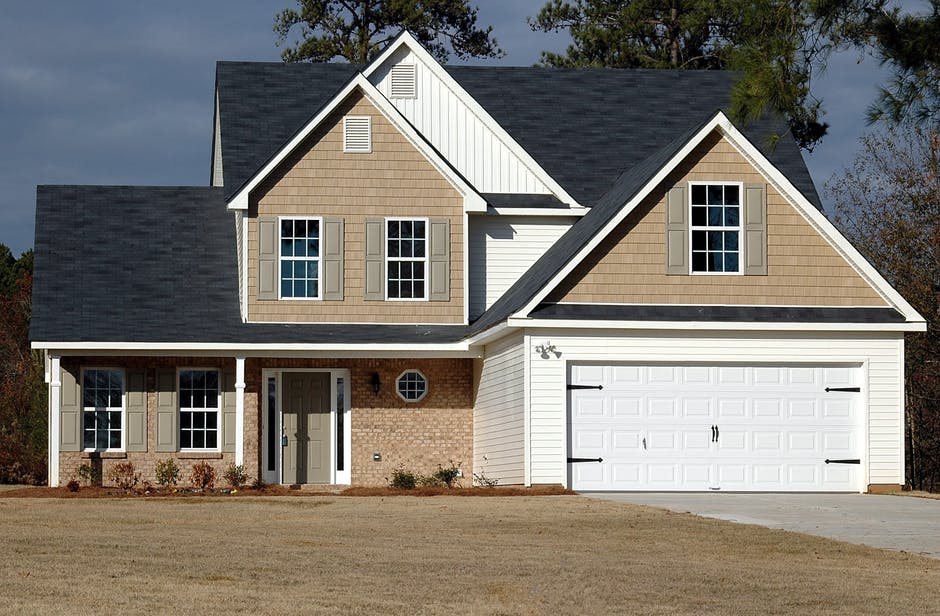A front-facing garage door is something that add looks to your home’s front façade. However, if your garage door looks beat-up, it can be a real liability. For houses where garages are placed in front and center, their garage doors have to look good. So, if your garage door looks old or worn-out, maybe it’s about time that you replace it with a new one.
When planning to install a new garage door, the first decision that you should make is about the type of door you want for your garage. Unlike before that people were restricted with styles and materials of garage doors, today, there are wide varieties to choose from. To be able to decide on the type of garage door, you need to know what options you have. This will help you make a sound decision about the one that will best suit your needs.
Types of Garage Doors
There are many types of residential garage doors available on the market. Some of the common ones are sliding, folding, up-and-over, and roll-up. To further know about them, here are some of the different types of garage doors.
Automatic or Manual Doors
When choosing a new garage door, you have the option to pick between a manual or an automatic door. In the past, automatic garage doors have been questioned whether it was safe to use especially in homes with children and pets. In the present time, this is no longer an issue because there are now safety features added to automatic garage doors. Compared to manual ones, automatic doors are more affordable, accessible, and convenient.
Sectional Doors
This is the most common type of garage door in the US. It has some horizontal panels that are hinged together and fixed with rollers. The whole door rides in two parallel tracks and a heavy-duty torsion spring serves to counterbalance its weight. This door type can be lifted either manually or by using a motorized garage door opener.
It is available with or without windows. Sectional doors with windows include up to 16 lites in several shapes such as square and arched. They come in different styles as well, from contemporary to traditional. They are also available in the popular carriage-house style which looks like swing-style doors but works the same as a sectional door.
Carriage or Swing Style Doors
This type of garage door operates like a pair of big French doors. Most of them are made of wood and hang from jambs or hinges. Swing style doors help integrate the garage with the rest of the home with its strong vertical lines.
Swing style doors are also more energy efficient because they seal well at the header. However, this door type requires more clearance. It’s because when you park your car too close to swinging doors, you will not be able to open them. They are also more time-consuming to manually open and lock compared to sectional doors, and more expensive to automate as well.
Tilt Doors
This door type is pretty standard because when they open, they do so via a tilting mechanism. There are two kinds of tilt doors, one is using J or jamb fittings and the other one is using T or track fittings.
The traditional fitting is the Jamb type tilt door. It tilts outward then lifts up to open half inside and half outside the opening of the garage. The track type tilt door on the other hand, gives people the opportunity to actually tilt the door upward and backwards to recess the door into the garage. Tilt doors are best for garages that do not have a lot of head room.
Garage Door Materials
Aside from the different styles, designs, and types of garage doors, they also come in different materials.
Wood Doors
Wood garage doors include cedar, redwood, fir and meranti. They are usually built with layers or plies so that they will not become distorted. Wood doors can be painted, finished on-site, or factory-stained.
Wood Composite Doors
Composite garage doors usually have a wooden frame that is covered with sheets of fiberboard. Some of the better models of composite doors have higher-density fiberboard skins. Some of them also have realistic details like grooves and overlays. These details help stimulate a real wood door. Its cores are also filled with polystyrene insulation.
Steel Doors
Two layers of galvanized steel are used when making steel garage doors. Its surface is either primed and painted with a strong topcoat finish. If you choose to install a steel garage door, you can paint it to match your home. They are also available with or without insulation.
The disadvantage of using a steel garage door is they can be dented easily and are subject to corrosion especially when your home is located in a coastal area.
Fiberglass Doors
Fiberglass garage doors are more durable compared to other options. They are less subject to denting and cracking. They also do not rust, however, they can break upon impact. For garage doors, two layers of fiberglass are usually bonded to a steel frame and is filled with polyurethane insulation. It also has steel end caps which help in improving rigidity.
Vinyl Doors
This garage door material is known to be kid-proof because it is difficult to dent or break. Vinyl doors are usually built upon steel frames and are filled with polyurethane insulation. They look similar to fiberglass only with a fewer colors available. This door material is very durable and requires only a little maintenance.
Aluminum Frame Doors
This door material is available in many colors, as well as in contemporary brushed finishes. Aluminum frame garage doors do not rust but are known to dent easily. But in the present time, those inexpensive aluminum garage doors have been replaced with durable versions. They now have heavy-duty extruded frames and dent-resistant laminated panels. If you have an extra-wide double door, aluminum is a good choice for your garage door material because it is light weight and it will not put much strain on the operating system.
There are indeed a lot of choices when it comes to garage doors in the present time. Now that you know some of the different types of garage doors as well as the materials they are made of, you can start deciding which type will best fit your garage. We hope this will help you in picking the garage door that will suit your needs.


